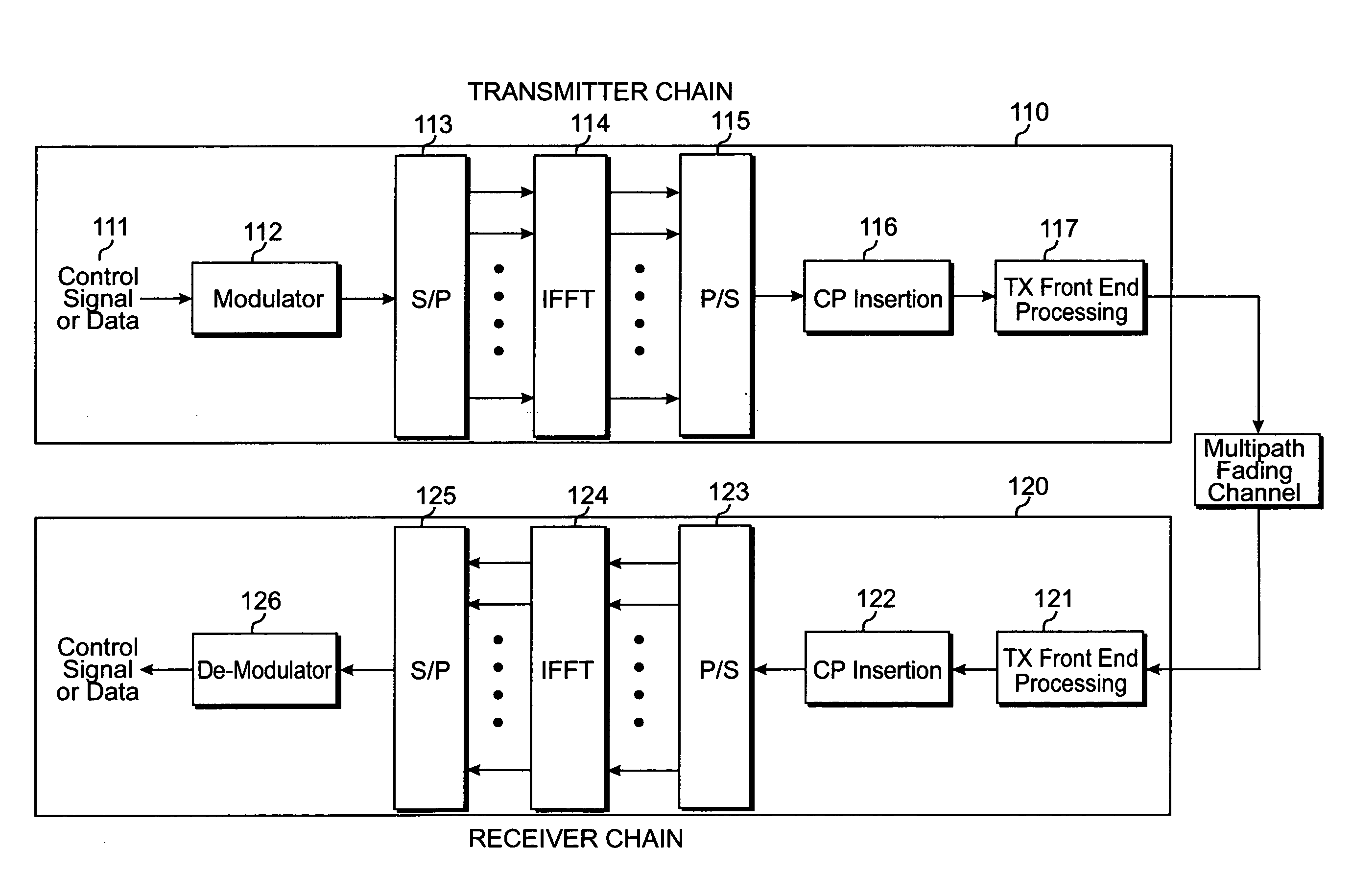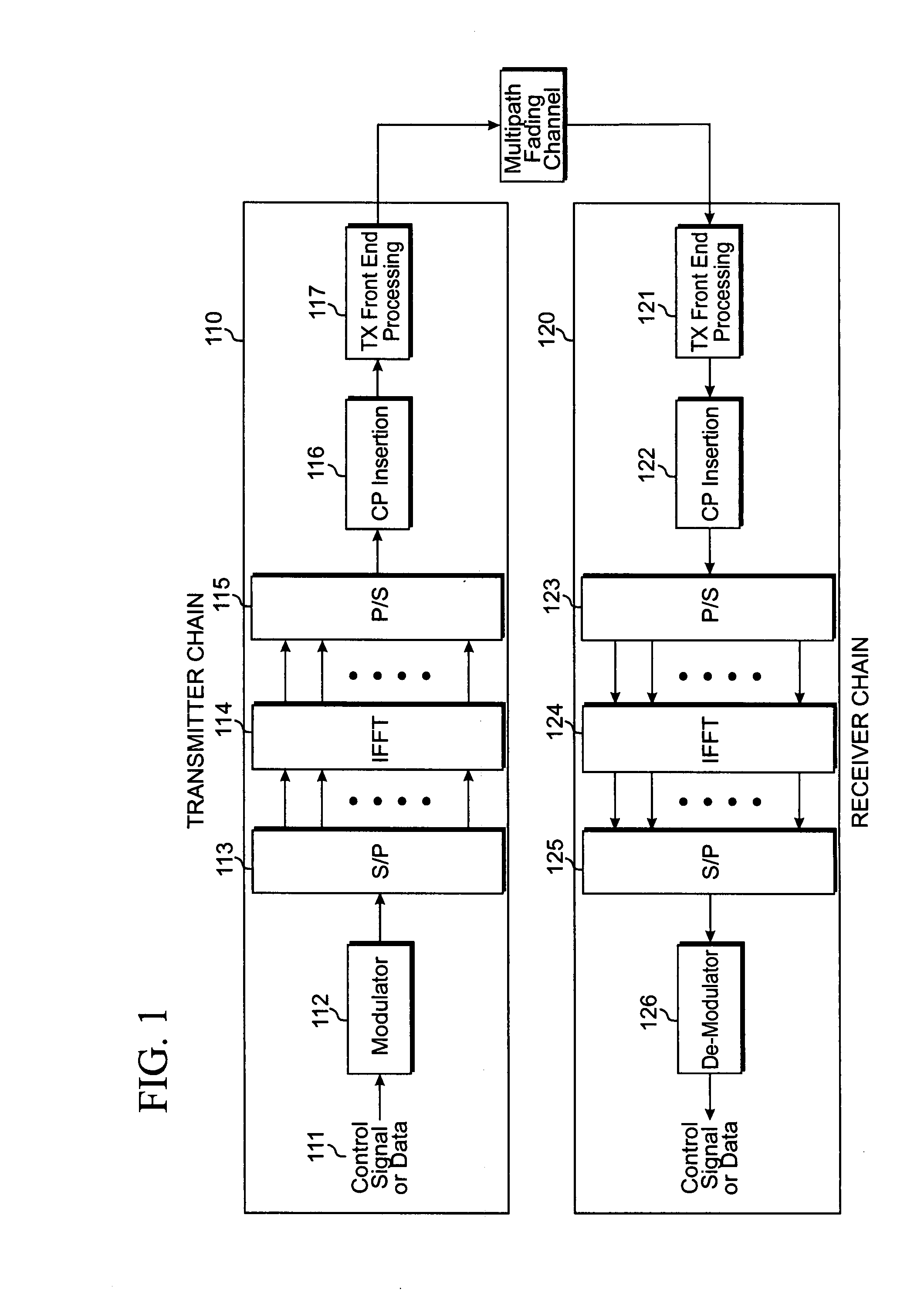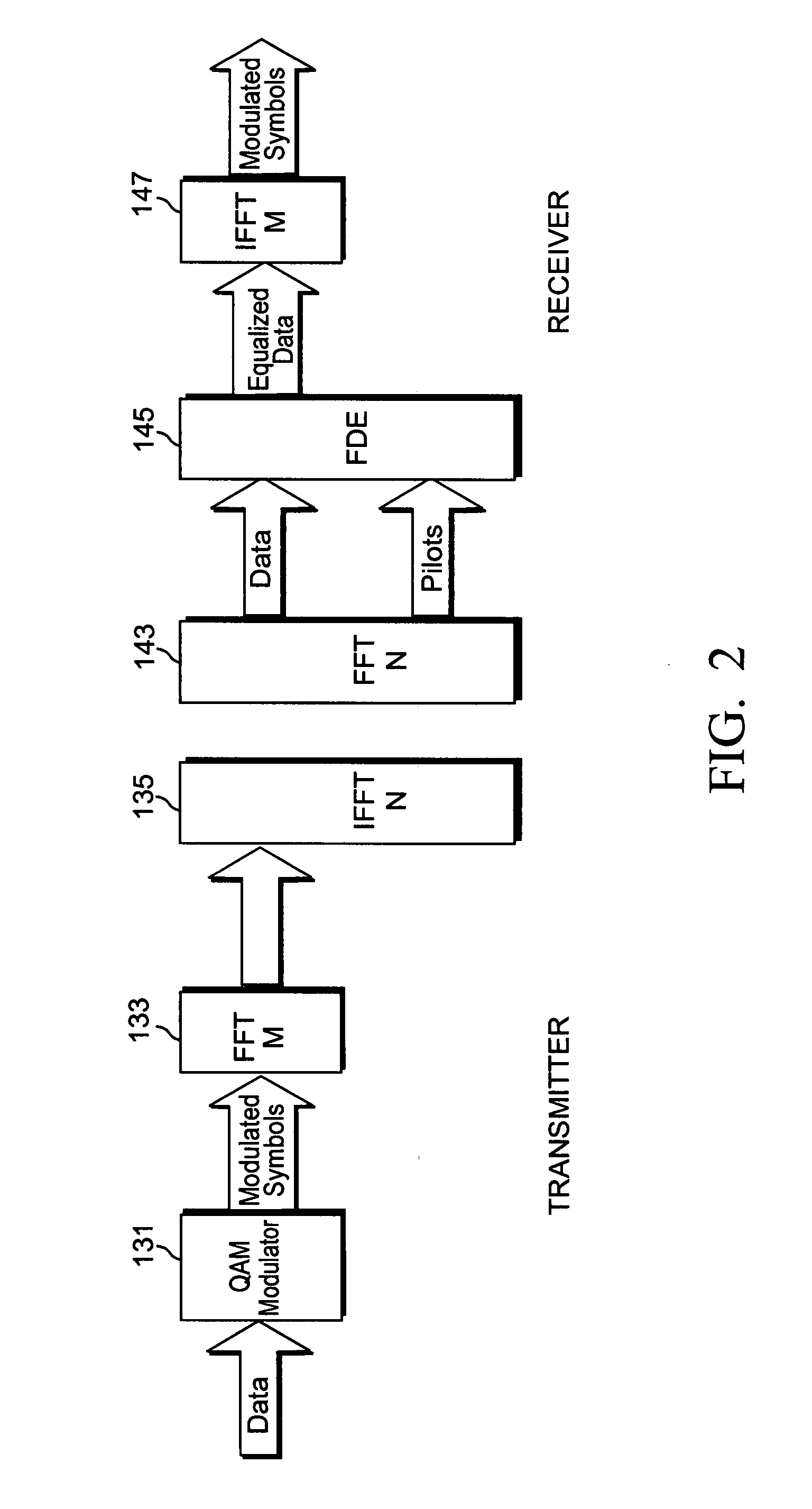Efficient uplink feedback in a wireless communication system
a wireless communication system and wireless communication technology, applied in multi-frequency code systems, duplex signal operations, multi-frequency communication, etc., can solve the problems of inefficient consumption of system resources, time-varying fading, frequency-selective fading,
- Summary
- Abstract
- Description
- Claims
- Application Information
AI Technical Summary
Benefits of technology
Problems solved by technology
Method used
Image
Examples
first embodiment
[0096]According to the principles of the present invention, Table 1 lists eleven possible physical uplink control channel (PUCCH) formats. The PUCCH may contain seven fields: “Format”, “Subbands CQI”, “MIMO rank and selected layers”, “MIMO preceding”, “ACK / NACK”, “Reserved” and “CRC”. The PUCCH may have a total of five possible payload sizes, namely 60, 43, 36, 27 and 16 bits. We assume that the UE provides feedback when one (1), five (5) or ten (10) subbands over the total bandwidth are defined. The first possible control channel, i.e., control channel 1 carries subband CQI and subband based MIMO preceding information for the case of 10 subbands. The total payload size for control channel 1 is 60 bits. Control channel 2 carries subband CQI but no MIMO information for the case of 10 subbands. If we assume that MIMO rank information is common across the subbands, it is not necessary for the PUCCH to carry the information about the MIMO rank and the selected layers. Therefore, the num...
second embodiment
[0101]In a second embodiment according to the principles of the present invention, as shown in FIG. 16, the PUCCH is first transferred into tail bit insertion unit 210. Tails bits are a fixed sequence of bits added to the end of a block of data to reset convolutional encoder 212 to a predefined state. Then, the PUCCH is coded with a convolutional code by convolutional encoder 212. The coded information is punctured as necessary by Puncturing / Repetition unit 214. After S / P conversion by S / P conversion unit 216, the information is modulated by modulator 218 using Quadrature Phase-Shift Keying (QPSK) modulation. A Constant Amplitude Zero Autocorrelation (CAZAC) sequence modulator 220 further modulates the complex modulated symbols using a CAZAC sequence. CAZAC sequence is used as an example and modulation with other sequences is also possible. An FFT operation is performed by FFT transformer 222 on the modulated CAZAC sequence and the resulting samples are mapped by mapping unit 224 to...
fourth embodiment
[0104]In a fourth embodiment according to the principles of the present invention shown in FIG. 20, the PUCCH is mapped to four subframes with one RB used in each subframe. Each CAZAC sequence is of a length of 12 and is mapped to 12 subcarriers. There are 12 SC-FDMA blocks within a subframe. Therefore, 12 CAZAC sequences are carried within a subframe. Each subframe carries twelve modulated CAZAC sequences with four subframes carrying forty-eight modulated CAZAC sequences. This allows for exploiting some time-diversity in the transmission of PUCCH. Also, for smaller bandwidths the total number of RBs is small and therefore spreading the PUCCH in time allows using smaller number of RBs per subframe.
PUM
 Login to View More
Login to View More Abstract
Description
Claims
Application Information
 Login to View More
Login to View More - R&D
- Intellectual Property
- Life Sciences
- Materials
- Tech Scout
- Unparalleled Data Quality
- Higher Quality Content
- 60% Fewer Hallucinations
Browse by: Latest US Patents, China's latest patents, Technical Efficacy Thesaurus, Application Domain, Technology Topic, Popular Technical Reports.
© 2025 PatSnap. All rights reserved.Legal|Privacy policy|Modern Slavery Act Transparency Statement|Sitemap|About US| Contact US: help@patsnap.com



